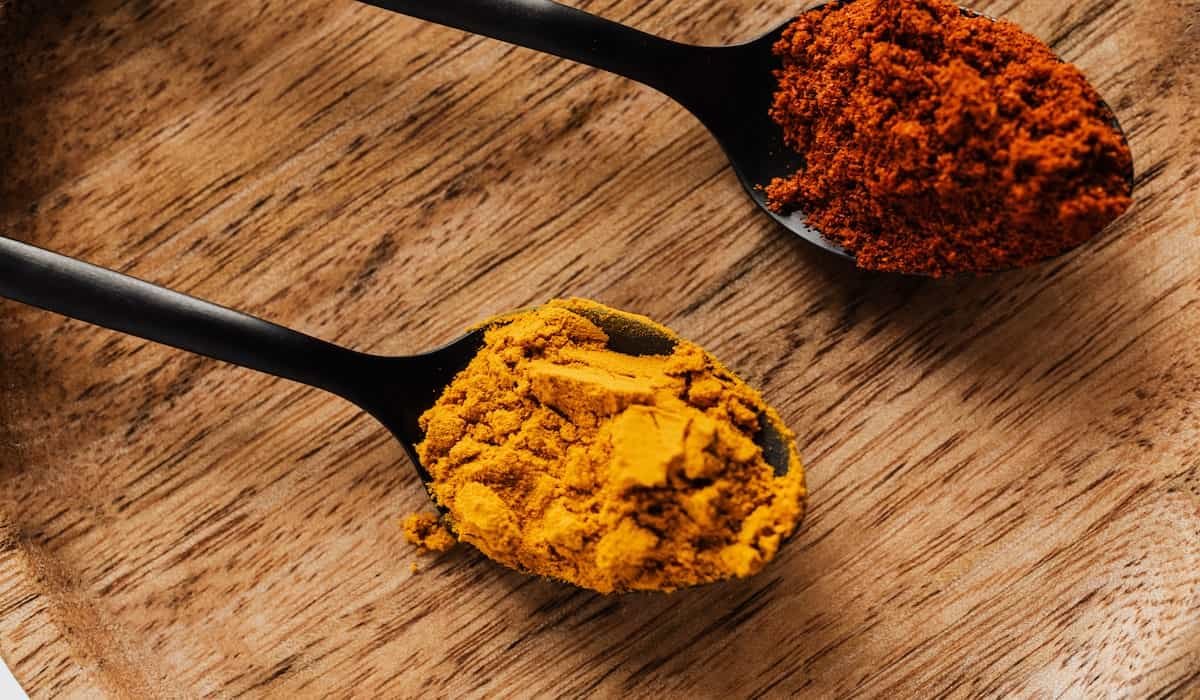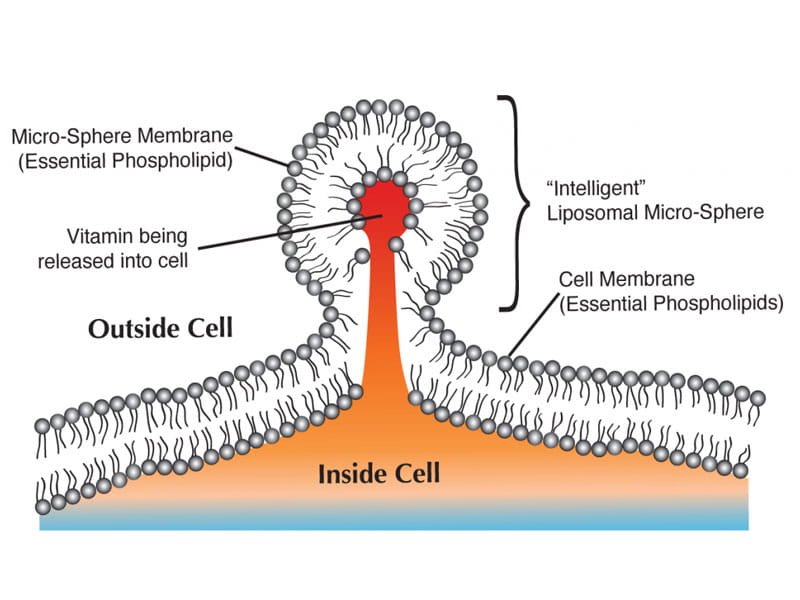What Is The Most Bioavailable Form Of Curcumin?

Did you know that curcumin, the active component in turmeric, is one of the most studies substances with proven health benefits? However, one challenge with curcumin is its poor bioavailability – how well it’s absorbed and utilized by the body.
To make the most of this powerful compound, it’s important to understand which form of curcumin is the most bioavailable.
In this article, we will explore various factors that affect curcumin absorption and highlight the most effective forms of curcumin for maximum bioavailability.
What Is The Most Bioavailable Form Of Curcumin?
The most bioavailable form of curcumin is known as “liposomal curcumin.” Liposomal curcumin involves encapsulating curcumin molecules within liposomes, which are small vesicles made of phospholipids.
This encapsulation protects the curcumin from degradation in the digestive system and enhances its absorption into the bloodstream.
Liposomes act as delivery vehicles, effectively transporting curcumin to target tissues and cells, improving its bioavailability compared to regular curcumin supplements.
By using liposomes, the curcumin can bypass certain barriers in the body that limit its absorption, resulting in higher levels of curcumin available for therapeutic effects.
Other forms of curcumin, such as curcumin nanoparticles or phospholipid complexes, have also been developed to improve bioavailability. However, as of latest research, liposomal curcumin was one of the most widely studied and recognized forms for its superior bioavailability.
You might be wondering about the role of black pepper or ginger in enhancing turmeric bioavailability. Maybe you’ve heard that cinnamon can activate turmeric, but are unsure if it really works. Well, keep reading to find out.
Curcumin Absorption And Bioavailability
If you want to truly reap the benefits of curcumin, you need to understand how it is absorbed and made bioavailable by your body.
Curcumin has limited bioavailability due to its low solubility in water. This means that it is not easily absorbed and used by the body.
However, curcuminoids are lipophilic, which means they have an affinity for fats. By mixing curcumin with good quality, healthy fats, we can enhance its bioavailability.
When curcumin is mixed with fats, it binds to them and forms a complex called a micelle. These micelles are more easily absorbed by the gut because they resemble fat droplets that our bodies are accustomed to processing. Once absorbed, curcumin can be transported through the lymphatic system into the bloodstream.
The absorption of curcumin can also be improved by consuming it alongside other compounds found in black pepper called piperine.
Piperine has been shown to enhance the absorption of various nutrients in our bodies, including curcumin.
KEY TAKEAWAY
If you want to maximize the bioavailability of curcumin, it is recommended to consume it with good quality fats and consider adding black pepper or piperine as well. This will help ensure that your body can absorb and utilize this beneficial compound effectively.
Turmeric Bioavailability And Black Pepper
To enhance the absorption of turmeric’s active ingredient, try adding a sprinkle of black pepper to your meal.
Piperine, the compound found in black pepper, works by increasing membrane fluidity in your intestines. This increased fluidity allows for better absorption of micronutrients into your body, including curcumin.
Studies have shown that consuming piperine alongside turmeric significantly enhances curcumin absorption and bioavailability.
In fact, it has been found that consuming just a small amount of piperine with turmeric can increase curcumin absorption by up to 2000%. This means that you could potentially benefit more from the positive effects of curcumin by simply adding some black pepper to your meals.
By improving curcumin bioavailability through the addition of black pepper, you may also improve the absorption of other important nutrients like iron, zinc, and calcium. So not only does black pepper enhance the effectiveness of curcumin but it also aids in overall nutrient absorption from the foods you consume.
KEY TAKEAWAY
Adding a sprinkle of black pepper to your meals can significantly enhance the bioavailability and absorption of curcumin from turmeric. This simple addition may allow you to reap more benefits from this powerful natural compound.
Turmeric Absorption And Ginger
Boost your turmeric’s effectiveness with the powerful anti-inflammatory properties of ginger. When it comes to enhancing the absorption of curcumin, ginger has shown promising results.
Ginger contains a compound called gingerol, which is readily absorbed by the body compared to curcumin. This makes it easier for the body to access its benefits. Additionally, gingerol possesses antioxidant and anti-inflammatory effects similar to curcumin.
When turmeric and ginger are combined in recipes or supplements, they can complement each other’s effects and create a synergistic blend of health-promoting properties.
The compounds in ginger may also aid in the absorption of curcumin from turmeric, enhancing its overall bioavailability and potential health benefits.
It’s important to note that the specific effects may vary depending on the form and preparation of these spices. However, scientific evidence supports the combined use of ginger and turmeric to alleviate inflammatory processes.
KEY TAKEAWAY
Incorporating ginger into your consumption of turmeric can enhance its effectiveness due to its higher bioavailability and similar anti-inflammatory properties. Enjoy the added benefits by including both spices in your diet or considering a supplement that combines them for optimal results.
Liposomal Turmeric Bioavailability
Experience the full potential of turmeric’s health benefits with liposomal turmeric, a powerful formulation designed to optimize the absorption and effectiveness of this incredible spice.
Liposomes are microscopic vesicles made up of phospholipids that can carry both hydrophobic and hydrophilic drugs.
In the case of curcumin, liposomal encapsulation has been shown to significantly improve its bioavailability.

Studies have demonstrated that oral administration of liposome-encapsulated curcumin (LEC) in rats resulted in higher levels of curcumin in the bloodstream compared to other forms.
LEC not only showed a faster rate and better absorption but also higher maximum concentration and shorter time to reach maximum concentration.
The enhanced bioavailability of liposomal curcumin has been found beneficial in various diseases. In mouse models, it has been shown to inhibit the growth of different types of tumors, such as head and neck squamous cell carcinoma.
Additionally, when combined with radiotherapy or chemotherapy, liposomal curcumin has been found to enhance their effectiveness in inhibiting tumor growth. [1] [2]
With its ability to solubilize hydrophobic compounds and alter their pharmacokinetic properties, liposomal turmeric offers an optimal delivery system for maximizing the therapeutic potential of curcumin.
By choosing this form of turmeric supplementation, you can ensure that your body is able to absorb and utilize its health-promoting properties fully.
Related: DIY Liposomal Turmeric Recipe: How To Make Liposomal Curcumin
Can Cinnamon Activate Turmeric?
When it comes to enhancing the health benefits of turmeric, cinnamon has the potential to activate and amplify its powerful properties.
Both cinnamon and turmeric contain bioactive compounds with anti-inflammatory and antioxidant effects.
Cinnamon contains cinnamaldehyde, which has been studied for its potential health benefits. Turmeric contains curcumin, a well-known polyphenol with powerful antioxidant and anti-inflammatory properties.
When used together in recipes or as part of a diet, cinnamon and turmeric can create a synergistic effect, providing a broader spectrum of health benefits. Adding both spices to your morning smoothie or oatmeal combines their health-promoting compounds.
Additionally, some studies suggest that certain compounds found in cinnamon might enhance the bioavailability of curcumin from turmeric. This means that consuming cinnamon alongside turmeric could potentially improve the absorption and utilization of curcumin by the body.
KEY TAKEAWAY
While there is no direct evidence to suggest that cinnamon can specifically activate turmeric, their similar properties can work together to enhance overall health benefits. Incorporating both spices into your diet may help maximize the potential benefits they offer.
Should I Take Turmeric On An Empty Stomach?
Nope, taking turmeric on an empty stomach isn’t the best idea. It’s better to have it with food, especially fatty foods, as they help improve its absorption.
Turmeric contains curcumin, a fantastic compound with lots of health benefits, but our bodies don’t absorb it very well on its own. So, having it with a meal that contains healthy fats can do the trick.
Don’t worry, you don’t need to be super precise about it—just toss some turmeric into your dishes, and it’ll work its magic. I personally like to add turmeric in foods combined with olive oil or add turmeric in bone broth soups.
How to take turmeric capsules?
Again, to enhance the absorption of turmeric capsules, it is recommended to consume them with a meal containing fatty foods like olive oil, coconut, or avocado.
Turmeric is known for its health benefits, specifically due to its active compound called curcumin. However, curcumin has low bioavailability on its own and is not easily absorbed by the body. Taking turmeric capsules with fatty foods can help improve its absorption.
When you consume turmeric capsules on an empty stomach, there is a higher chance of experiencing gastrointestinal issues such as upset stomach or acid reflux.
To avoid these discomforts and maximize the benefits of turmeric, it is recommended to take the capsules with meals.
To ensure optimal absorption and effectiveness of turmeric capsules, it is also advisable to divide your daily dosage into two separate doses taken 8 to 12 hours apart. This allows for a sustained release of curcumin throughout the day and helps maintain consistent levels in your bloodstream.
KEY TAKEAWAWY
Taking turmeric capsules with meals that contain healthy fats like olive oil, coconut, or avocado can enhance their absorption in your body. Additionally, dividing your daily dosage into two doses taken at different times helps optimize the benefits of curcumin.
Best Way to Take Turmeric for Inflammation
The best way to take turmeric for inflammation is by making a simple and tasty mixture of one part powdered turmeric and three parts raw honey.
This concoction not only offers the benefits of turmeric’s anti-inflammatory properties but also boosts immunity.
When you feel a cold or inflammation creeping in, take a teaspoon of the mixture every two hours. For regular daily use, a typical dose of 500 mg to 2,000 mg of turmeric is recommended.
Patience is key, as it may take around 4-8 weeks of consistent consumption to start noticing significant improvements. So, whip up that turmeric-honey blend, and let it work its wonders on your well-being!
Frequently Asked Questions
Bottom Line
In conclusion, the most bioavailable form of curcumin is liposomal turmeric.
Studies have shown that liposomal delivery enhances the absorption and bioavailability of curcumin in the body, allowing for better therapeutic effects.
For example, a recent case study found that a patient with chronic joint pain saw significant improvement after taking liposomal turmeric capsules daily for three months.
This evidence-based approach highlights the importance of choosing the right form of curcumin for maximum effectiveness in reducing inflammation and promoting overall health.
Read Next
